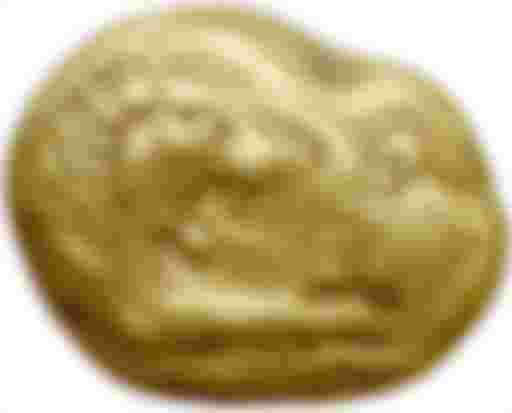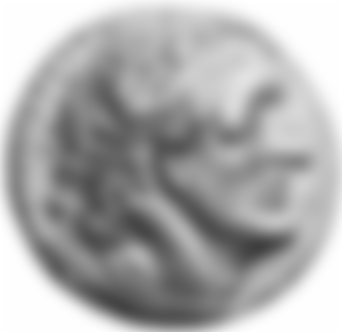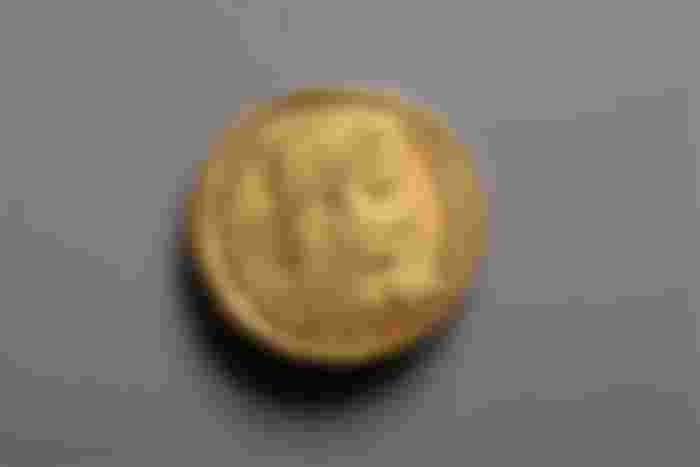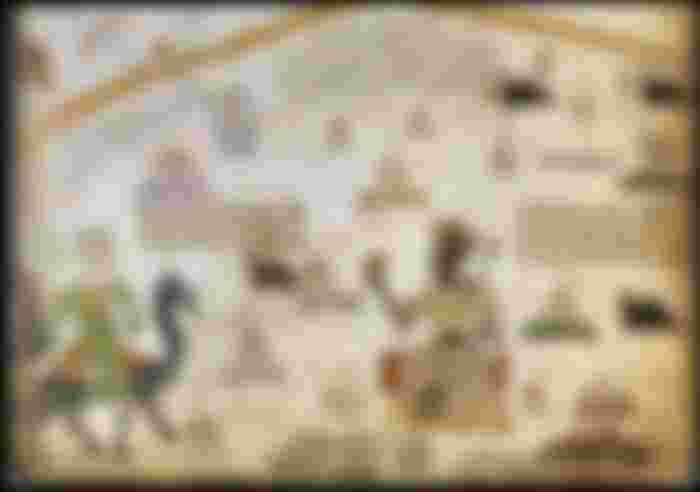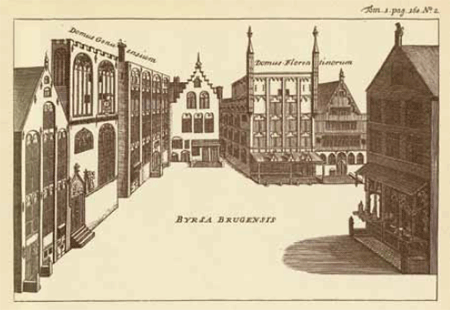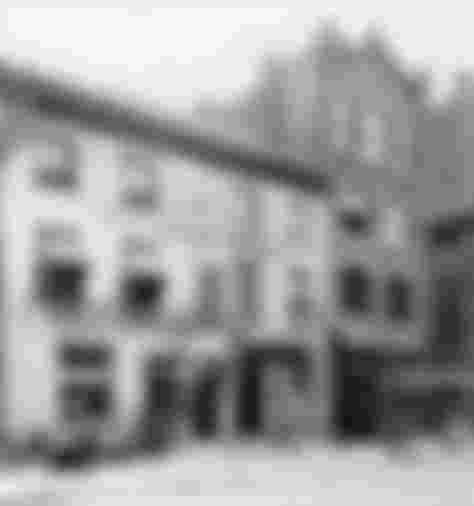
History of Currency - Part 2/2
Find the Introduction HERE
Find Part 1 HERE
It will be necessary to wait - 630 - 640 years B.C., to see the first Metallic Coins appear. As soon as Man managed to fragment a raw Metal.
The arrival of the Currency will thus allow everyone to know the value of any object, according to a unique reference mark.
The Birthplace of the Currency is undeniably in Anatolia (today's Turkey), in the Kingdom of Lydia. This Kingdom was at the center of one of the most important trade routes of the Old World.
It's King Alyatte II and his son Croesus who were the real forerunners, and radically changed the relationship of Men with the Currency.
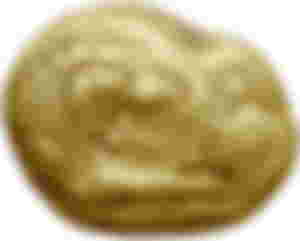
This Kingdom was crossed by the river 'Pactole' in which the King extracted 'Electrum' (a natural alloy composed on average of 40% Gold and 60% Silver). The King estimated that the shells or metals (non precious) were not reliable enough for the exchanges, he thus established :
Precious and rare Metals as Currency (Gold, Silver and Bronze).
Standardized and precisely certified Coinage (The King imposes a unified weight on the Electrum coins, and also imposes a face value greater than the amount of metal contained in the coin).
It is at this time that we begin to talk about Bimetallic Currency.
When the son of Alyatte II, Croesus becomes King, he uses the new techniques of Metallurgy to separate the Gold and Silver that make up Electrum. He thus establishes the first Currency Ratio 1:13.5 → 1 Gold = 13.5 Silver.
Metallic coins made of precious metals had their own intrinsic value, linked to their weight.
In the popular culture we use expressions, which relate this history of more than 2500 years:
"Rich as Croesus".
"I touched the Pactole".
- 335 - 333: Aristotle, Greek Philosopher, theorizes the principle of balanced exchanges, as well as the three main functions of the Currency. Allowing everyone to better satisfy their needs while developing social relations.
Unit of Account / Measuring Instrument (Price)
Intermediary in exchanges (Payment)
Value Reserve (Ability to transfer in time the Purchasing Power - Savings)
These functions tell us about utility, but not about its Nature.
- 300: Minting the first Coin with the portrait of a person. The 'Penta Drachme' in Egypt, representing Ptolemy.
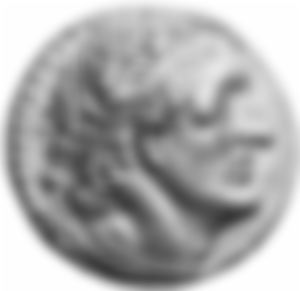
- 290: The First Coin Workshop (Mint Production Office) is located in the 'Capitol', one of the 7 hills of Rome. At the foot of the Temple of Juno Moneta (the Warning Goddess), 'Moneta' would be the origin of the word 'Money'.
It is in these Offices that the 'Denarius', the first coin to bear a value inscribed, 'X' for 10 in Roman, is Minted.
- 218 - 202: First Monetary Crisis: Faced with serious financial problems, the Roman State proceeds with the first Monetary Manipulations, devaluing the Bronze and Silver Currencies.
- 44: Caesar orders the Minting of Coins with his effigy. This currency quickly becomes an instrument of political propaganda and corruption. "Caesar is the absolute Sovereign of Rome".
Year 33 A.D.: Serious financial crisis in Rome: Loans made by the Elite of Rome became increasingly scarce, and creditors were struggling to reimburse their credit, this was probably due to the fall in the price of Land. This elite demanded the repayment of creditors by requesting a loan from the Emperor Tiberius. The Emperor granted a loan of 100 Million Sesterces without interest. Money that will restore the people's confidence in the economy.
1st Century: Establishment of the economic principles of Christianity. Putting special emphasis on the spirit of Poverty "Money can divert from the essential, which is the relationship to God and to others", while insisting on the separation between the Spiritual and the Material.
162: War Financing Strategy: Polyen, a Greek Jurist, writes a set of war stratagems/ruses, while submitting ideas for its financing:
Exceptional taxes
Public Loans
Private financing (voluntary or not) of Warships
Extortion of Loot
Sale of Religious properties (seized during conquests)
Monetary Manipulation (Minting of a new Coin in a lower quality metal, and the obligation for traders and soldiers to use it)
3rd Century: First Inflationary Crisis (Rome). Between the end of the expansion of the Empire, the Wars (Spain, Gaul and the Middle East) and the important financial obligations (payment of legionnaires, distribution of wheat to the population ...), the War Booty and taxes (only conquered peoples have to pay a tax) are no longer sufficient to maintain the economy of the State. Instead of adopting unpopular budgetary measures, the Emperor's used Monetary Manipulation, regularly reducing the Silver content of the Denarius:
In the 2nd Century the Silver content of the Denarius was 90%.
At the beginning of the 3rd Century it was 50%.
In 276, there was only 4% of Silver left in a Denarius.
This was the result of an exceptional inflation of the price of wheat, between 218 and 293 its price was multiplied by 16!
294: Reinstatement of the Trimetallic Monetary System: The Roman Emperor Diocletian restored Gold (Aureus Coin), Silver and Bronze, in an attempt to curb wheat inflation. In the year 301, he puts in place the "Edict of the Maximum": Ceiling prices of consumer goods and the salaries of workers. He also reorganized the tax system.

310: Creation of the Solidus. Emperor Constantine completely overhauls the monetary systems previously established, in order to restore the stability of the Currency. He issues a new Gold coin: the Solidus (Solidus = Solid, to affirm the will to want to stabilize this Currency), its weight is standardized at 4.55 grams of fine gold in 312. As well as the Silver Denarius, the Bronze Pound and the Aureus (25 Denarius) as other coins. The Solidus will remain unchanged until the 10th Century.
Solidus is also the origin of the words :
Sou: Currency which will be used about 500 years later in France.
Sol: which will become 'Balance' (Solde) for accounting entries.
600 - 700: Economic principles of Islam.
781: Charlemagne establishes the Duodecimal account system (Duodecimus → Twelfth in Latin), based on a Silver Block of 1 Pound.
The Sou (inspired by the Solidus) is worth 12 Silver Denarius,
The Pound is worth 20 Sou (or 240 Denarius)
This system will last for 1000 years, until the French Revolution (1789-1799).

994: Appearance of the first Notes "Paper Money" - "Jiaozi": in China during the Song Dynasty (960 - 1279) to overcome the shortage of Metallic Currency, it is there that the "Paper Money" appeared, since the invention of the Printing Moving Characters, first in Terracotta and then in Metal, mainly used for internal transactions, Gold and Silver being reserved for international transactions. The Paper Money is not guaranteed by a determined quantity of Metal, which causes an important inflation.
The Felted Paper was however used in 177 B.C., it was better adapted to commercial uses especially between Notables, before them, in ancient Egypt, they used a substance extracted from Papyrus leaves.
12th - 13th Century: Medieval Economic Revolution. Europe knows a great period of economic expansion (which results in the construction of Majestic Cathedrals). This period is also charged with innovations and development of work techniques:
Agriculture
Textile
New sources of energy, animals replace humans (transport, mills)
The imports which are more and more frequent (Paper, Horology, Compasses, Wheelbarrows ...) have favored the construction of Bridges, Canals, but also the birth of Great Fairs.
Leonardi Fibonacci, Italian mathematician, introduces Indo-Arabic numbers in Europe in 1202, which replaced the Roman numbers and published his first work, the 'Liber Abaci' (Book of Calculations). This new form of numbering favors the development of Credits, by simplifying the calculation of interest. The 'Fibonacci Suite' is still used in today's market finance.
13th Century: Marco Polo brings back to Europe a 'Wonder' from the Mongolian Empire, the 'Paper Money' (This form of currency was guaranteed by a reserve of Silk or Silver, they could be exchanged for Silk or Silver and were accepted for the payment of taxes. Reinforcing confidence in its use), in addition to his stories of travels to the court of Emperor Kubilai Khan.
13th - 14th Century: Development of the great commercial empires of Africa, especially Mali. Under the reign of Kanku Musa (Mansa Moussa), the prosperity of his Empire was based on Trans-Saharan caravan transport (Copper, Salt, Gold ...), but also by the Niger River, which became a major trade route.

The Kingdom of Mali had nearly half of the Old World's Gold Reserves. Being a Muslim, Kanka Musa wanted to go on a pilgrimage to Mecca, accompanied by a caravan of several hundred Camels carrying tons of Gold, 60,000 members of his court, 12,000 slaves, and an army of 200,000 Men, including 40,000 Archers. During his passage in Egypt, Kanku Musa displays his great generosity, he distributes Gold everywhere he goes, which has resulted in a fall in the price of Gold in this country. On his return from Mecca, he decided to subscribe to as much Credit as possible, at exorbitant rates, to try to save the Egyptian economy. This King is considered by historians as the richest Man of all times, as his fortune was immense and incalculable.
The Mongolian Empire (much larger) also plays an important role in international trade (between Asia and Europe - from China to Antioch (present-day Turkey)) especially with the Silk Road.
1262: Affirmation of Royal Power over the Creation of the Money. In France, King Louis IX signs the Chartres Ordinance, which imposes the King's monopoly on the creation of the Money. The latter becomes mandatory throughout the Kingdom, and its imitation becomes formally prohibited.
The Currency reflected the economic and military power of a Nation, hence the severe and inflexible repression against monetary counterfeiting.
While the Currency was always more present in the exchanges, but also the attacks of convoys, the theft of Gold, or simply the difficulty to move large sums of money, was born the need to keep all this Currency safe.
From 1300 to 1500 saw the emergence of the modern Grand Private Banks :
Italy → Medici Family
France → Jacques Coeur
Holy Roman Empire Germanic → Fugger Family

At that time, these Great Families were rather considered as Traders, who mainly practiced Exchange Operations, because of the strong pressure of Religions on the banking system.
In 1309, the First Stock Exchange was created in Bruges (today's Belgium) to facilitate the exchange of financial securities and to bring buyers and sellers together in one place.
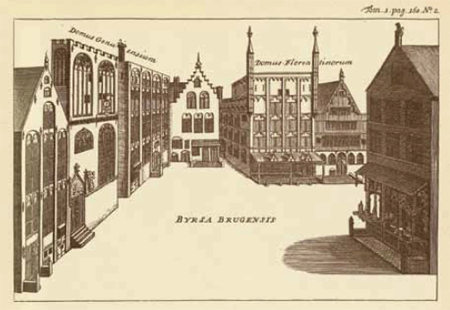
La Bourse du Commerce was created in France (Lyon) in 1540.
The Stock Exchange in England (Jonathan's Coffee House in London) in 1698.
The New York Stock Exchange (NYSE) was founded in 1742, better known as Wall Street, and is today the world's largest Stock Exchange.
The Dow Jones was created in 1896.
This same period is a prosperous one for Europe and its economy. Following two Centuries of evolution and technical innovations, the economy is hampered by various events:
Global warming
Crisis in Agricultural Production (Great Famine 1314 - 1317)
Destruction of Agricultural Land due to the Wars
Various epidemics (including Black Death 1347 - 1351)
Private banks are going bankrupt, the States are on the verge of bankruptcy, but this still allows salaries to increase (because the workforce was less numerous).
Nicolas Oresme, author of the "Traité des Monnaies" between 1355 and 1366 submits the idea that: "All monetary manipulations (modification of the metal content of Currencies) causes prices to rise and destroys confidence in exchanges". This Traité will then become the forerunner manual of Political Economy.
The following Century is the starting point of Globalization, strongly developing trade between the Continents (but also Triangular Trade).
Christopher Columbus discovers America in 1492
Vasco de Gama opens the Route of the Indies in 1498
The Doctrine of Mercantilism made its appearance between the 15th and 16th Centuries: Exports are the factors of enrichment of a country, especially for the precious metals that these exchanges bring.
1545: Spain exploits the Silver mines of Potosi (present-day Bolivia), resulting in an influx of precious metals (30,000 tons of Silver) to Europe and Asia.
1636 - 1637: First 'Speculative Bubble' on the Tulip in the Netherlands.

The first Central Bank was created on September 17, 1668, in Sweden. The 'States Bank of the Kingdom' (currently the Bank of Sweden - Riksbanken) in Stockholm. It obtained the status of Central Bank in 1897, and in 1904 the exclusive right to issue Swedish Banknotes and Currencies. The Bank of England was created in 1694, the Bank of France in 1800 and the Bank of America in 1929.
These Central Banks are different from other so-called "Commercial Banks" (a term still used today) because they gradually obtain the exclusive monopoly of issuing Banknotes and Currency in a given territory. Whereas Commercial Banks can still produce Scriptural Money.
The Scriptural Money is a written Money, which does not exist, today the Scriptural Money represents 90% of the Money Mass. It represents the money deposited in current accounts, checking accounts and bank credits, popularized by the scriptural means of payment:
Checks
Bank transfer
Direct Debit
Telepayments
Cards ...
This Money can nevertheless be converted into Coins or Banknotes.
The first Metallic Currency in North America was issued in 1652, by the Colonial Government of Massachusetts, while Paper Money was produced as early as 1690, and was initially printed in Pound Sterling (£) (The Dollar was the Official Currency one hundred years later).

In 1741 the Archduchess of Austria and Queen of Hungary, Maria Theresa of Habsburg had a new Currency Minted in her effigy, the Thaler. This currency was quickly adopted by the Spanish and English colonists of America. The Thaler is the first metallic coin used internationally. It will be used until the 1960s on all continents, the last minted Coins put into circulation date from 1780 (year of Maria Theresa of Habsburg's death).
The Check was created in England in 1742. While the Bank of England was the only one to be able to issue Banknotes and Money, the English Bankers invented this deferred means of payment.
On April 2, 1792, U.S. President George Washington promulgated a Law making the Dollar the Official Currency of the United States under the 'Mint Act'. The Act also authorized construction of a Mint Building in Philadelphia, which was the only establishment authorized to produce metal coins (at the time).

For the record, it seems that the word 'Dollar' is a phonetic distortion of the 'Thaler' of Maria Theresa of Habsburg. By abandoning the Pound Sterling, following violent riots in Boston Harbour, which forced the Americans to turn their backs on the British and their currency (Pound Sterling £), they opted for the Dollar.
In 1817 the British economist and philosopher David Ricardo published the work "Principles of Political Economy and Taxation" and quotes: "The value of all goods lies in their scarcity and the amount of labor needed to produce them".
In 1844 in England, the "Bank Charter Act" aimed at limiting the money supply, and imposed the "Currency Principle" according to which the issue of Bank Notes must be proportional to the quantity of Gold held in the reserves. Giving more powers to the Central Banks (as no other bank had the right to issue Bank Notes), which aims at avoiding inflation. This led to the introduction of the Gold Standard.
From 1860 it was also possible to send Money by Telegraph (whose first use dates back to 1844), but due to the complexity of the transactions, and especially the difficulty of the Banks to manage the funds, this means of Money transfer was quickly abandoned, it was the "New York & Western Union Telegraph Company" which proposed this service. Western Union still exists and still offers long distance money transfer services.
In 1862 the 'Bureau of Engraving and Printing' was founded in the United States, and the very first American Money Paper was printed, in green.

1873 - 1900: The 'Coinage Act' was introduced in 1873, the United States Congress wanted to put an end to the depreciation of the Currency, especially after the opening of the huge Comstock Lode Silver Mine, Silver became very abundant, many Silver coins had a lower value compared to the weight of metal they contained. But following the instability resulting from this law (deflationary policy and decrease in the quantity of Money), the United States adopted the 'Gold Standard Act' in 1900 and thus established the Gold Standard.
1890: The 'Sherman Antitrust Act' prohibits any contract, arrangement or understanding between various parties to restrict trade or monopoly. This marks the birth of modern competition law.
Following the Banking Panic in the USA in 1907 (leading to the fall of the stock markets by almost 50% and the rescue of the economy by Banker J.P. Morgan, who drew on his own funds to restore confidence in the financial system) it becomes necessary to centralize the issuance of the Currency. In 1913 the 'Owen-Glass Federal Reserve Act' created the Federal Reserve Bank → the FED.
1922 - 1923: Hyperinflation in Germany: The massive printing of Banknotes, to pay striking employees, discredited the German Currency on the Financial Markets, the price increase became uncontrollable.
1921: + 60%
1922: + 5200%
End 1923: + 16 580 000% (a product sold 1 Mark on January 1st, was sold 165 800 Marks at the end of the year)
This phenomenon is due to the more than abusive use of the Policy of the Banknotes Board, because it was not only the Reichsbank that could print Banknotes, but any large company. In 1923 Hjalmar Schacht introduced drastic measures:
Prohibiting private agents from printing Banknotes
Strict limitation of Bank Credits (to reduce the money supply in circulation).
Hyperinflation disappeared in 1924, and confidence in the economy was restored. A new Currency is thus created: the Reichmark. Since those prosperous years of recent German history, which have left deep scars (ruin of many citizens), Germans still show a severe mistrust towards any 'Easy Money Monetary Policy'.
1932: Appearance of the First Parallel Currency. It is in Austria, in Tyrol and more precisely in the commune of Wörgl, that this brand new form of Currency is set up. It was designed to lose 1% of its value each month. This Currency was born from the idea to find an alternative, following the Great Depression (initiated by the Stock Exchange crash of October 1929) and to incite people to use the Money again, and to trust the system again. This new form of Currency was a great success, so much so that other municipalities also wanted to develop their own parallel currency, but the Wörgl was banned in 1933 by the Administrative Court.

In 1934, a similar idea came up in Switzerland with the 'WIR' (a Parallel Currency to compensate for the lack of liquidity), this currency is still in circulation in this country, but on a very small scale.
The Austrian Professor of Political Science, Joseph Aloïs Schumpeter, became famous in 1942 with this expression from 'Creative Destruction':
"A major innovation generates a phase of growth, synonymous with job creation, then some companies go bankrupt because their techniques or products have become obsolete, which causes a phase of depression, this phase of financial difficulty, however, arouses the creative imagination of new entrepreneurs, therefore new innovations and a new phase of growth".
In 1956 the American economist Milton Friedman put forward the theory that "Prices vary proportionally to the quantity of the Money. Inflation is everywhere and is a monetary phenomenon".
The first general-purpose Credit Card was launched in 1966. The Interbank Association, a grouping of 14 major American Banks launched this brand new financial product. (Other projects had already emerged since the 1950s, but too limited in the types of transactions).

In 1971, this year marked the end of the Bretton Woods System (financial agreements concluded in 1944 between 44 countries, and the birth of the IMF - International Monetary Fund - and the World Bank). While the U.S. Dollar is the last (world) Currency convertible into Gold, President Richard Nixon decides to suspend this convertibility (it will never be re-established) and the Gold Standard is also abandoned. Since the 1960s, the exit of American Capital has accelerated, as well as foreign investments, military and economic aid from abroad. This situation no longer allows the US Dollar to maintain parity on the basis of 1:35 → $35/oz (measure defined in 1934).
In 1976, the Jamaica Accords officially validated the abandonment of any reference to Gold in an international monetary system. From then on, the price of Currencies varies daily on the foreign exchange markets, according to the Law of Supply and Demand. Thus validating the 'Floating Exchange' that has been in effect since 1973.
The WTO (World Trade Organization) was created in 1995 to establish the rules governing international trade. - China became a member in 2001.
1998: Creation of the European Central Bank (ECB), its mission is to maintain price stability in the EuroZone, and the Eurosystem which is the monetary authority of the EuroZone.
Creation of the G20 in 1999. This governmental body brings together the 20 largest economies in the world, representing about 90% of the world's GDP (Gross Domestic Product).
2007, the year that marked the beginning of the subprime crisis. Due to the inability of 'poor' creditors (as opposed to 'primes' loans for the richest) to repay their debts, the balance sheets of financial institutions became fragile.
In 2008 Banks went bankrupt (including Lehman Brothers), then the stock markets panicked, with the largest capitalizations losing nearly 50% compared to the same period in 2007. The drying up of credit then initiated an economic crisis.
2009: Birth of Bitcoin (BTC), the first of the Cryptocurrencies. In 2021 it begins the year with a market capitalization of more than 600 billion US dollars.

Thank you all for taking the time to immerse yourself in this long history.
Feel free to tell me in comment if you have encountered any errors or omissions.
Thanks to all of you
See you soon
Christophe WILHELM
© Bitcoin Meister
Source pics: Google

